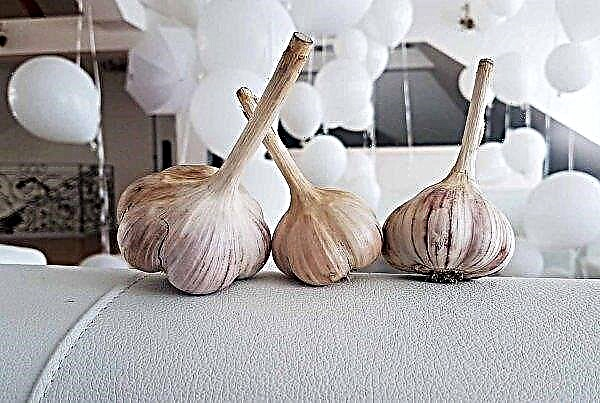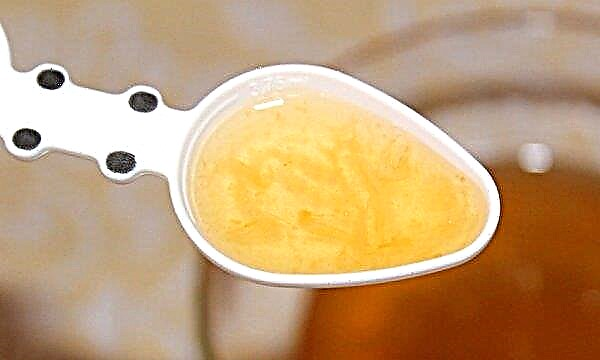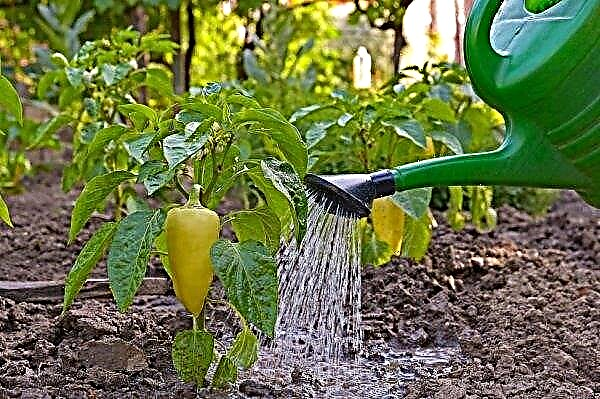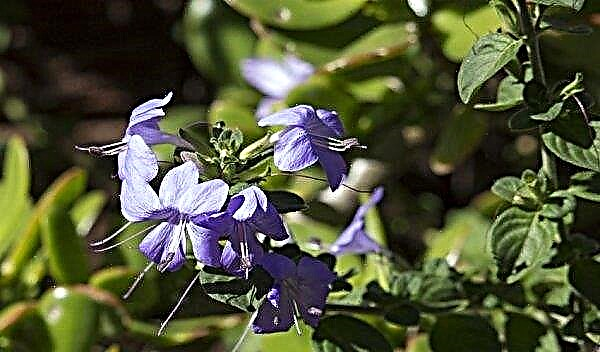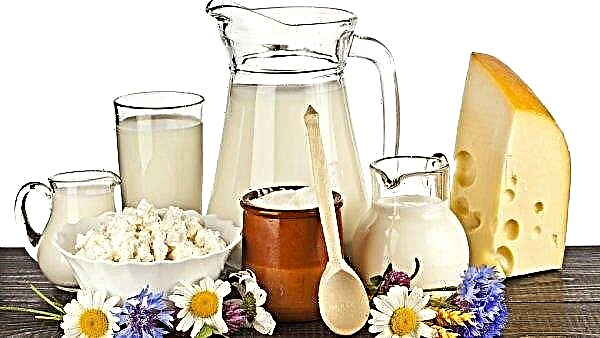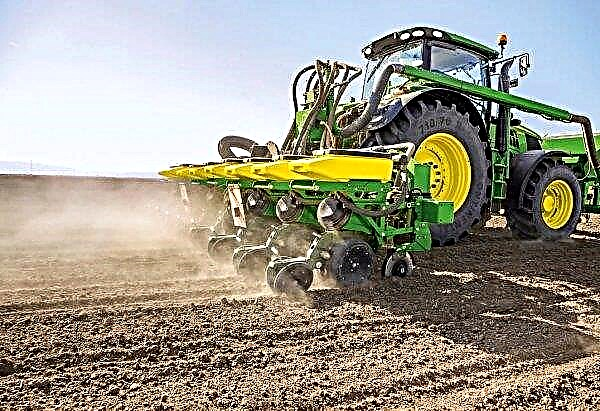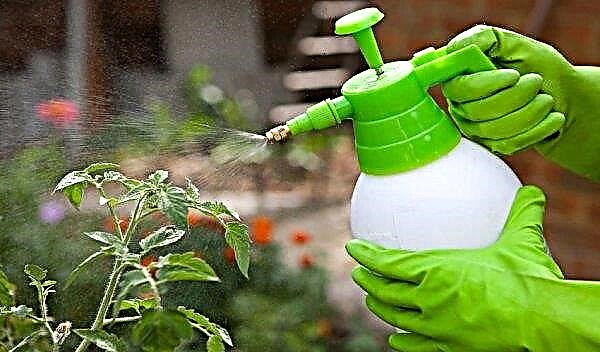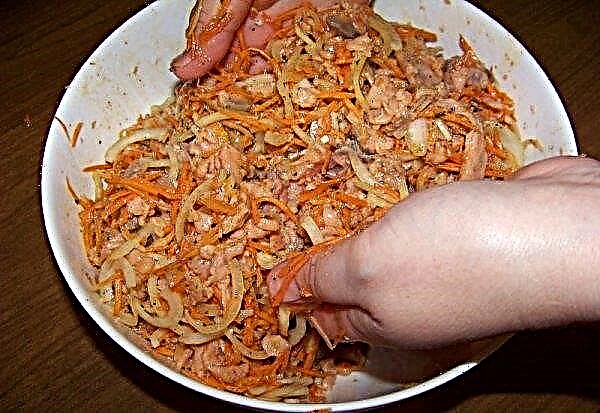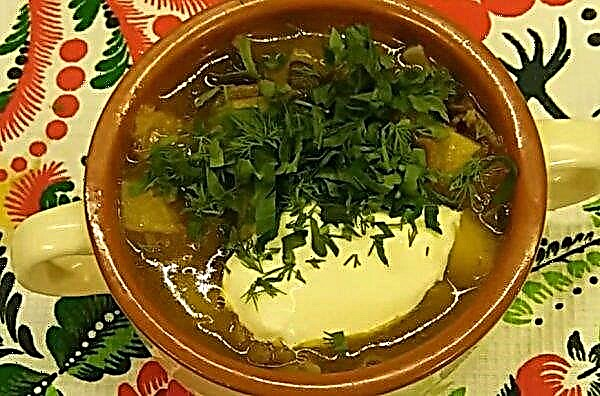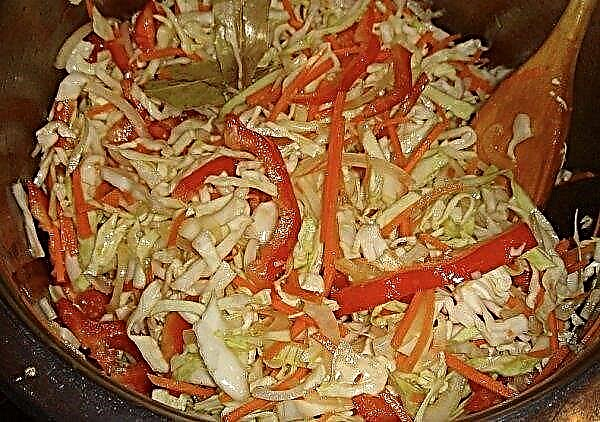Growing tomatoes is a time consuming task. Hassle is enough at each stage of the process, so every gardener wants his work to be in vain, and the culture pleased with a good harvest. In the article we will talk about how to make the tomato crop in the greenhouse be large.
How to grow seedlings?
How an adult tomato bush will bear fruit depends on how correctly the seeds are planted and the seedlings are taken care of.
Seed preparation
Before sowing seeds, they must be decontaminated with a solution of potassium permanganate. For this, 5 g of manganese crystals are diluted in 1 liter of water. Into the liquid for 30 minutes. immerse the seeds. After they should be washed thoroughly under running water and soak the ash in the infusion for a day. The immersion depth should not be more than 20 mm.

After 24 hours, the seed without washing is laid out on a cotton cloth soaked in infusion of ash. In this form, they are placed in a plastic container with a tight lid, where the seeds will germinate. When the buds of the sprouts appear, the seed is laid out in the refrigerator on a shelf (at a temperature of about + 1 ° C) for the night. On the day the seed is moved to heat. The steps for alternating heat and cold need to be repeated 5 times. Hardening will increase germination and strengthen seedlings.
Important! If the seed material was procured independently, then before processing it with potassium permanganate, it is necessary to sort it by soaking in clean water for 15 minutes. Seeds suitable for planting will settle to the bottom.
Sowing seeds
On packages with seeds, the dates of their sowing in indoor and outdoor soil are always prescribed.
Landing technology in stages looks like this:
- Fill plastic cups or containers for seedlings with a purchased soil mixture for seedlings, having previously lined the drainage layer (1-2 cm) with expanded clay or eggshell at the bottom.
- Water the soil with warm water.
- Using a match, make holes approximately 10 mm deep.
- If sowing is carried out in glasses, then two seeds should be put in one hole. When sowing in boxes, it is better to make furrows instead of holes of the same depth and put seed in them with an interval of 20 mm. There should be 40 mm between the furrows.
- Sprinkle the seeds with moist soil, creating a thin layer above them.
- Cover the container with a film and place the crops in a lighted room with a temperature of + 22 ... + 25 ° С.
- After emergence, transfer the seedlings to a cool place with a temperature of + 17 ... + 18 ° C.

How to transplant seedlings?
An equally important role in obtaining a good harvest is played by the process of transplanting young bushes into the greenhouse.
Soil preparation
First you need to form beds 0.4 m high and 0.6–0.9 m wide. Between them, leave a space of 60 cm. A bed is formed 7 days before planting. Before planting, prepared soil from a mixture of sod land and humus (1: 1) must be decontaminated with potassium permanganate. 1 g of potassium permanganate is diluted in 10 liters of water. This liquid is heated to + 60 ° C. A liter of liquid should be poured into each prepared well.
Did you know? Tomatoes contain chrome, so after eating several fruits, you can feel full, as the element muffles the feeling of hunger.
Replace potassium permanganate using the drug "Barrier". 0.25 liters of the drug are diluted in 10 liters of water. Half a liter of the mixture should be poured into the well. Sprinkle the residue with the beds.
Transplant soil fertilizer
If the bed for tomatoes is from clay or loamy soil, it needs to be fertilized with peat, humus or sawdust, applying fertilizer per bucket per square meter of area. When the bed is made of peat, it must be diluted with turf soil, humus, sawdust or small chips, using a bucket of one of the listed substances.

You also need to add half a bucket of coarse sand. Calculation is also carried out per square meter of area. To all this, you still need to add 2 tbsp. l superphosphate and 1 tbsp. potassium sulfate. After this, the beds should be dug up.
Transplanting
On the day chosen for planting, the greenhouse is maintained at + 20 ° C (during the day) and at night - a couple of degrees lower:
- Moisten the soil in the garden.
- Make holes at a distance of 60 cm, one from one in a row or in a checkerboard pattern.
- Carefully remove the seedling from the container and place it in the hole, spreading the roots.
- Sprinkle the roots with earth and lightly compact it.
- Irrigate the bed and plant seedlings for a few days.
Important! So that the root system grows better, you can pinch the main root before placing it in the hole.
Dressing
To achieve a good tomato crop, it is advised to grow a bush on a strengthened root system. To do this, even at the stage of sowing seed or picking seedlings, make sure that in one tank at a distance of a maximum of 10 mm from each other there are two young bushes.
When they get stronger, and their stem becomes pencil-thick, using a sharp cutting object, you need to remove 20-30 mm of the upper layer of the stem on one and the second plant so that these sections are opposite each other. Then you need to reduce the stems of the two bushes so that the exposed areas touch and wrap with a bandage. Every day you need to spray the bandage.

When it comes time to transplant the seedlings into the greenhouse, pinch the top of a weaker bush. The bandage is removed after planting the seedling in the hole. The result is a bush with a root system twice as large as that of a regular tomato. This allows you to grow a bush that can bear fruit much earlier than scheduled, and the yield will be higher.
Features of further seedling care
Further care consists in timely watering, top dressing and maintaining the desired microclimate in the greenhouse.
Watering
Tomatoes are watered twice every 7 days using the technology “in the hole” or “under the bush”, because the plant does not like moisture to fall on the foliage. On one bush you need to spend about five liters of water. Its temperature should be + 23 ... + 25 ° С. The frequency of irrigation should be adjusted taking into account weather conditions and check the condition of the soil before irrigation procedures.
Fertilizer
The first bushes are fed 7 days after transplanting seedlings into the greenhouse. Complex fertilizers diluted with water for irrigation are introduced. Subsequent feeding is carried out with an interval of one and a half weeks. As a nutrient mixture, you can use mullein infusion (pour half of the mullein into the bucket, fill the rest of the space with water, leave for five days).
A bucket of such liquid is enough to feed 25 bushes. Tomatoes respond well to foliar fertilizing. Before flowering, you can carry out the following fertilizing: matchbox of urea and 1 g of potassium permanganate diluted in 10 liters of water. This volume is enough for 60–70 bushes. Such a spray will protect from sprinkling of flowers.

Greenhouse ventilation
It is very important to regularly ventilate the greenhouse, as this procedure not only refreshes the air in it, but also helps maintain the desired microclimate. Often, many gardeners think that for this it is enough to simply open the doors to the greenhouse. But they forget physics, according to the laws of which, warm air always rises, and cold air goes down.
The door to the greenhouse is not filled to the full height of the greenhouse, so all the warm air is collected under the ceiling and cannot leave the greenhouse. To effectively ventilate the greenhouse, it needs to have windows under the ceiling or on the roof. At the same time, it is impossible to keep the windows and doors open at once, as there will be a draft and the tomatoes will get sick. On hot days, the vents can be left open for the whole day, and closed at night.
Did you know? From a botanical point of view, tomato is a fruit. If we consider it as such, then among other fruits, it is a leader in world production. Each year, tomatoes produce 60 million tons, while bananas — 44 million tons, and apples - 36 million tons.
Harvesting and storage
If seedlings were planted in the greenhouse in winter, then from such plants until the summer you need to harvest every 2-3 days. In the summer, ripe fruits need to be picked every day. Collect them carefully, separating them from the stem and folding them into trellised boxes. You can pluck the fetus at the stage of pink or red ripeness. For long-term storage, it is advisable to wrap each tomato in clean soft paper or a napkin and put it in a wire drawer, pouring layers of hay or sawdust. Store in a dark and cool place.

Recommendations for increasing the yield of tomatoes
There are some secrets, knowing which you can grow a good tomato crop:
- Orient the beds in the greenhouse from east to west. So the plant will receive the maximum amount of sunlight and heat.
- Help the culture self-pollinate. Shake the bush periodically so that the pollen moves from the stamens to the pistils.
- Use a weak solution of boric acid when the second and third brushes begin to bloom. This will stimulate the formation of pollen.
- During the active growth of the root system, swell to stimulate the appearance of new roots.
- After harvesting, collect the tops, chop them and mix with the soil in the garden. The process of decomposition of organics will help saturate the plant with nutrients for the next year. But this procedure can only be carried out if the culture was not affected by the disease or pests.
- Step in the bushes every 7–10 days.
- Before the first inflorescences appear each week, pick 1-3 lower leaves on the bush, starting in mid-June.
The quality of the crop depends on the effective care of the crop. Without attention, it is difficult to grow good tomato bushes, and a weak bush will never bear much fruit, so good care is the key to a rich harvest.

